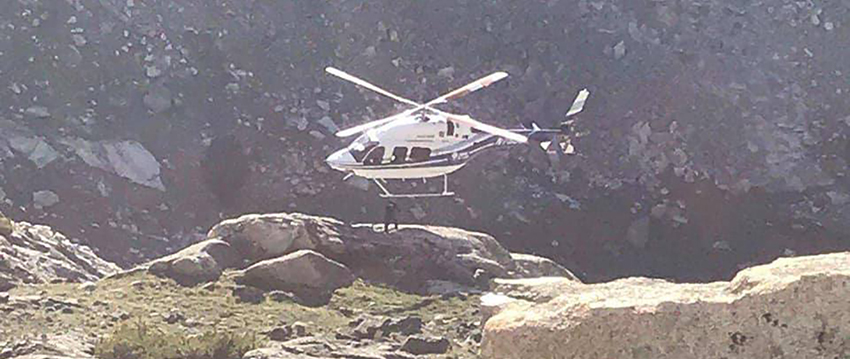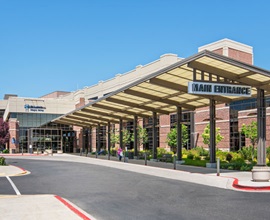Air St. Luke’s crews rescue injured hiker in overnight mission

Air St. Luke’s and paramedic crews are being recognized after last week’s saving of a recreationist from the Pioneer Mountains of Custer County on an overnight mission.
The Magic Valley Air St. Luke’s crew responded to a late afternoon rescue call for an injured hiker who was stuck in an isolated, rocky spot unsuitable for a helicopter to land.
Paramedic David Elwell and flight nurse Kenna Olmsted performed a hover exit, jumping from the aircraft. They then hiked 900 yards up a steep, rocky mountain to reach the hiker who had fallen 40 feet down slick rock.
The crew performed basic treatment, and because of weather conditions and the technical nature of the rescue, requested service from Montana-based Two Bear Air.
As the team waited for the hoist helicopter, pilot Tim Allen flew back to Magic Valley to refuel and swap crews, picking up nighttime pilot Scott Prow and paramedic Bill Gully.
Two Bear Air arrived after 9 p.m., but winds kept them from being able to safely hover for the rescue.
“The way that the winds are in those mountainous regions is, they kind of swirl,” Olmsted said. "It was really unpredictable and a little bit higher than it was safe for the patient to be hoisted out.”
Air St. Luke’s and Two Bear Air employees helped hike the person down the rocky terrain to a spot where the team could hover-load into Two Bear Air’s helicopter and then transfer to Air St. Luke’s in a safer spot.
Olmsted and Gully hiked back up to the ridge to get the equipment needed for the transport, and the Air St. Luke’s pilot hovered to get the equipment.
“He did some passes when he came in,” Olmsted said. “We didn’t have any way to talk to each other.”
“We were able to load the equipment to take care of the patient, but I couldn’t talk to him because the winds had picked up and it felt unsafe for the helicopter to be there at that time. I waved him off the mountain.”
Olmsted and Gully used the last of their cell phone battery to send simple text messages and were told the pilot would return for them at first light.
The team had survival gear to get through the night.
“We’re taught to be prepared for any situation,” Olmsted said. “We always carry our warm gear with us because you never know where you’re going to end up.”
Weather conditions overnight were cold and windy. The rock-face location prevented the team from setting up a tent or building a fire. They used life blankets as barriers from the wet, cold ground and sheltered themselves behind a rock.
During the sunrise pre-flight check, the pilot noticed damage to the helicopter that likely occurred during the night operation. The Magic Valley team was grounded and Air St. Luke’s Boise was called in. The crew hiked another 2.5 hours to meet the helicopter in a safer place.
In the end, all were safely picked up and transported.
Air St. Luke’s leaders are using this situation as a learning experience.
Going forward, teams will carry extra radio batteries in survival packs, along with a spot locator that can turn a cell phone into a satellite phone. Helmet adapters will be added to allow crew members to plug into radios even while outside the helicopter, providing a way to communicate with the pilot no matter the conditions.
Olmstead plans to tuck an extra cell phone battery pack in her flight suit.
“We were able to effectively get the patient off the mountain to the hospital where he could be treated, we safely sheltered overnight, didn’t put our pilot in an unsafe situation and were able to go home,” she said.
Idaho Helicopters, Inc. is the FAR Part 135 Certificate Holder providing aviation services and owns and operates the helicopters used by Air St. Luke's. Turbo Air, Inc. is the FAR Part 135 Certificate Holder providing aviation services and owns and operates the airplanes used by Air St. Luke's.
About The Author

Anita Kisseé was the Treasure Valley public relations manager for St. Luke’s Health System.



